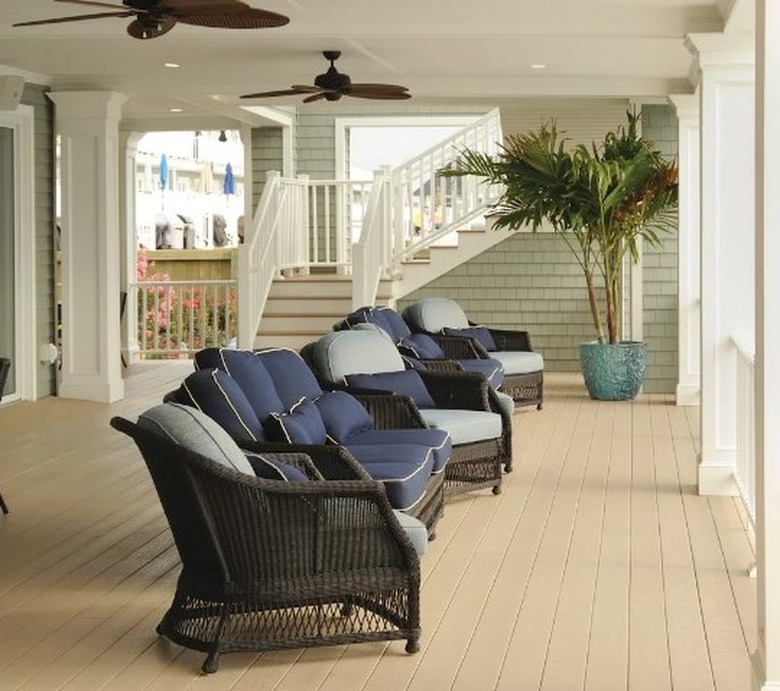How To Cut PVC Boards
We may receive a commission on purchases made from links.
The first alternatives to wood decking boards were composites, and now builders also have the option of PVC. They are pure plastic — not a combination of plastic and wood waste — and they are about as durable as decking boards get. Besides decking boards, you can also find other building materials made from PVC and vinyl (which are the same thing), including fence boards and panels, interior and exterior trim boards, and deck railings.
Working with PVC building materials is a lot like working with wood. You can drill it, fasten it with screws, and paint it. You can even cut it with conventional saws, but it's a little hard on saw blades. There's a way around that, though.
The Best Blades for Cutting PVC Board
The Best Blades for Cutting PVC Board
PVC is considerably harder than wood, and because it isn't porous, saw blades tend to generate a lot of heat that can melt the material and wear out the blades. This is particularly a problem when using a circular saw or table saw, and the best blades to use for these saws are those with carbide tips. Steel blades wear out easily and could even warp.
Chip-out isn't a problem when cutting PVC the way it is when cutting wood, but you can still get rough edges, and PVC isn't as easy to sand as wood. When cutting PVC boards with a circular saw, use a blade with 32 teeth. Blades with more teeth tend to generate more heat, while those with fewer teeth tend to rip out material. If you don't have a 32-tooth blade, the one in your collection with the fewest teeth will give you the best cut.
Ripping and Crosscutting PVC
Ripping and Crosscutting PVC
When you need to crosscut a PVC board to length, the process is pretty much identical to that for cutting wood. The biggest difference is the flexibility of PVC as compared to wood. If the offcut is longer than 2 feet, it's a good idea to support it to prevent it from flopping around while you're cutting, especially when cutting vinyl trim.
When ripping PVC boards on a table saw, the saw blade heats up more than it does when doing crosscuts, and the extra heat can cause the plastic to melt and release fumes. Since PVC can contain dangerous chemicals, such as phthalates, cadmium, and even lead, it's good practice to wear a respirator, especially if you're working indoors and ripping several boards in a single session.
Sanding and Shaping PVC Boards
Sanding and Shaping PVC Boards
Because PVC is a nonfibrous material, it isn't as easy to sand as wood, particularly if you use a belt sander, which tends to melt the material. It's best to plan your cuts to avoid having to sand, but if sanding is inevitable, you can use a pad sander with 100- or 120-grit sandpaper. Wipe off the sanding dust that accumulates on the surface of the board with a rag moistened with acetone.
You can shape PVC boards with a router but be sure to use a carbide bit. One great feature of PVC is that it bends when you heat it to a temperature of 320 degrees Fahrenheit with a heating pad. This allows you to make an arch out of a single board. Note that when you install PVC decking boards or exterior trim in temperatures below 60 degrees, you should leave an 1/8-inch expansion gap when you butt boards end to end because they will expand when the temperature rises.
